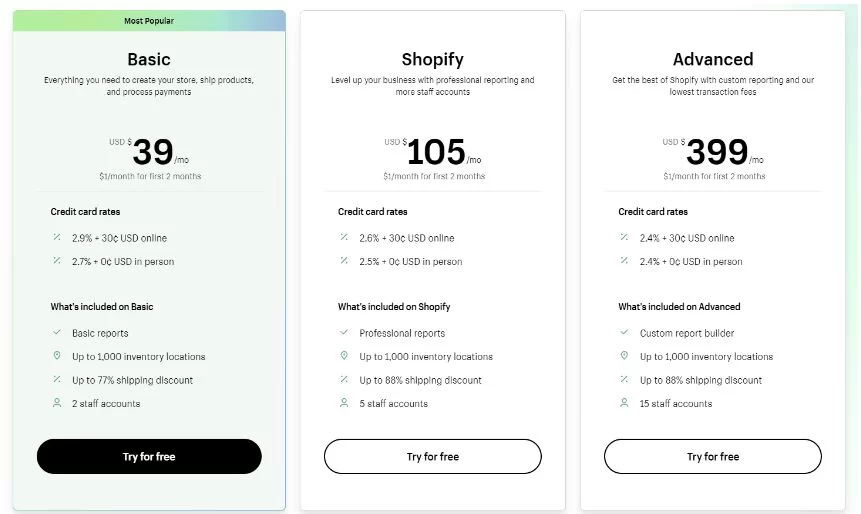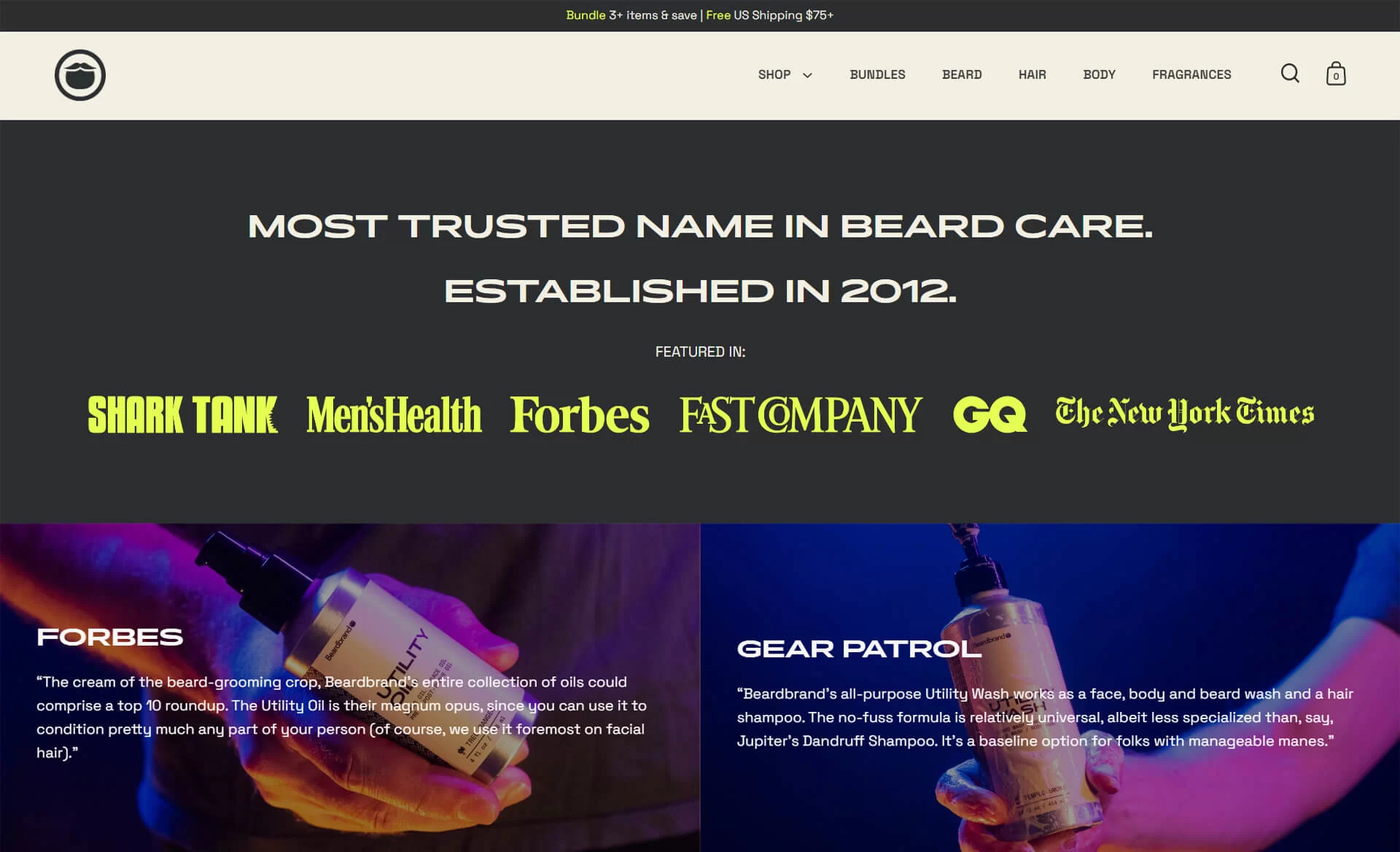Table of Contents
Table of Contents
- Introduction
- Overview of WooCommerce
- Key Features and Capabilities of WooCommerce
- Pros and Cons of Using WooCommerce
- Introduction to Shopify
- Key Features and Advantages of Shopify
- Why Customers Love Using Shopify
- Shopify Plans and Pricing Options
- Benefits of Migrating to Shopify
- Migration Process from WooCommerce to Shopify
- Real-Life Case Studies and Success Stories
- Conclusion
Add a header to begin generating the table of contents

1. Introduction: WooCommerce vs. Shopify
When it comes to running an online business, choosing the right e-commerce platform is crucial. Two popular options that often come up in the decision-making process are WooCommerce and Shopify. WooCommerce, as a WordPress plugin, offers a flexible and customizable solution, while Shopify provides a comprehensive and user-friendly platform specifically designed for e-commerce.
In this blog post, we will explore the key factors that make migrating to Shopify the right choice for your business. From enhanced scalability and simplified management to a wide range of design options and integrated payment gateways, Shopify offers numerous benefits that can significantly impact your online success.
Join us as we delve into the comparison between WooCommerce and Shopify and highlight why migrating to Shopify can be the optimal decision for your business’s growth and success.
2. Overview of WooCommerce
WooCommerce has emerged as one of the leading e-commerce solutions, especially for businesses using WordPress as their content management system. With its seamless integration and extensive customization options, WooCommerce has gained popularity among online merchants. It offers a robust platform for setting up and managing online stores, enabling businesses to sell products and services with ease. In this section, we will explore the key features and capabilities of WooCommerce, as well as its pros and cons.
Key Features and Capabilities of WooCommerce
- Seamless WordPress Integration: WooCommerce seamlessly integrates with WordPress, leveraging the familiarity and flexibility of the world’s most popular content management system. It transforms a WordPress website into a fully functional online store.
- Product Management: WooCommerce provides comprehensive tools for managing product inventory, categories, variations, pricing, and more. You can easily add, edit, and organize products, ensuring a smooth shopping experience for customers.
- Customization Options: WooCommerce offers a range of customization options to tailor your online store to your brand’s unique requirements. With customizable themes, templates, and CSS editing, you can create a visually appealing and personalized storefront.
- Extensive Plugin Library: The WooCommerce plugin ecosystem is vast, offering a wide range of extensions and add-ons to enhance your store’s functionality. These plugins enable features such as advanced analytics, payment gateways, shipping options, and marketing integrations.
- Payment and Shipping Options: WooCommerce supports various payment gateways, including PayPal, Stripe, Square, and offline payment methods. It also provides flexible shipping options, allowing you to set up shipping rates based on location, weight, or product type.
Pros and Cons of Using WooCommerce:
Pros:
- Seamless integration with WordPress, leveraging its extensive features and plugins.
- Customizable and scalable, allowing businesses to adapt their online stores to their specific needs.
- A wide range of extensions and plugins are available to enhance functionality and expand features.
- The strong developer community ensures ongoing support and updates for the platform.
- Offers control over the hosting environment, allowing businesses to choose their preferred hosting provider.
Cons:
- Requires technical knowledge or assistance for initial setup and customization.
- As an open-source platform, responsibility for security and maintenance falls on the website owner.
- A large number of options and settings can be overwhelming for beginners.
- Scalability may require additional optimization or dedicated server resources as the store grows.
Despite the potential challenges, WooCommerce remains a popular choice for businesses seeking a flexible and customizable e-commerce solution. Its integration with WordPress, extensive feature set, and strong developer community make it an attractive option for businesses of all sizes.
3. Introduction to Shopify
Shopify has established itself as one of the leading e-commerce platforms, providing businesses with a comprehensive solution to set up and manage online stores. With its user-friendly interface, robust features, and scalability, Shopify has gained immense popularity among merchants worldwide. In this section, we will explore the key features and advantages of Shopify, why customers love using it and provide an overview of the different Shopify plans and pricing options.
Key Features and Advantages of Shopify:
- User-Friendly Interface: Shopify offers an intuitive and user-friendly interface, making it easy for businesses to set up and manage their online stores without any technical expertise. The platform simplifies the entire process, from product management to order fulfillment.
- Comprehensive Store Management: Shopify provides a comprehensive set of features for managing your online store. This includes inventory management, order processing, payment and shipping integrations, and customer relationship management. Everything you need to run your e-commerce business is built into the platform.
- Professional Storefront Design: With Shopify, you have access to a wide range of professionally designed themes. These can be easily customized to match your brand’s look and feel, ensuring a visually appealing and engaging storefront.
- App Ecosystem: Shopify boasts a vast ecosystem of apps and integrations that extend the platform’s functionality. From marketing and analytics to inventory management and customer support, you can enhance your store’s capabilities with ease.
- Secure and Reliable: Shopify takes care of security and hosting, providing a secure and reliable platform for your online store. It ensures data protection, PCI compliance, and regular updates to keep your store and customer information safe.
Why Customers Love Using Shopify:
- Seamless Integration: Shopify seamlessly integrates with various third-party applications and services, allowing businesses to leverage popular tools for marketing, analytics, and more.
- Mobile Optimization: Shopify offers responsive themes and a mobile-optimized checkout experience, ensuring a smooth and enjoyable shopping experience for customers on any device.
- Robust Customer Support: Shopify provides 24/7 customer support via live chat, email, and phone, ensuring that merchants receive timely assistance when needed.
- Scalability and Performance: Shopify’s infrastructure ensures high scalability and performance, even during high-traffic periods or seasonal sales spikes.
- Easy Payment Processing: Shopify offers a built-in payment gateway called Shopify Payments, along with support for numerous third-party payment providers, making it easy for customers to complete purchases.
Shopify Plans and Pricing Options:
Shopify offers a range of plans to cater to businesses of all sizes and budgets. The plans include:
-
Shopify Starter:
- Cost: $5 per month
- Best suited for: Businesses looking to sell on social media platforms or add a “Buy” button to an existing website.
- Key features: Ability to sell products on Facebook and Instagram, access to Shopify’s mobile app, and the option to use Shopify Payments or other payment gateways.
-
Basic Shopify:
- Cost: $39 per month
- Best suited for Small businesses or startups getting started with e-commerce.
- Key features: Online store with unlimited products, 24/7 customer support, sales channel integration, discount code creation, and abandoned cart recovery.
-
Shopify:
- Cost: $105 per month
- Best suited for Growing businesses with moderate sales volumes.
- Key features: All Basic Shopify features, gift card creation, professional reports, access to third-party calculated shipping rates, and the ability to offer better shipping discounts.
-
Advanced Shopify:
- Cost: $399 per month
- Best suited for Established businesses with high sales volumes and complex needs.
- Key features: All Shopify features, advanced report builder, third-party calculated shipping rates, real-time carrier shipping, and the option to use advanced Shopify apps.

4. Benefits of Migrating to Shopify
-
Enhanced scalability and performance:
- Scalability: Shopify is built to handle high levels of traffic and sales volumes. As your business grows, the platform can easily accommodate increased demand, ensuring a seamless shopping experience for your customers.
- Performance: Shopify’s servers are optimized for speed and reliability, resulting in fast page load times and improved overall performance. This is crucial for reducing bounce rates and maximizing conversions.
-
Simplified Setup and Management:
- User-friendly interface: Shopify provides an intuitive interface that makes it easy to set up and manage your online store. You don’t need extensive technical knowledge or coding skills to get started.
- Centralized platform: Shopify consolidates all the necessary tools and features in one place, simplifying the management of your store. From inventory management to order fulfillment, everything can be handled within the platform.
-
Wide Range of Professional Themes and Design Options:
- Theme selection: Shopify offers a diverse selection of professionally designed themes. These themes are customizable, allowing you to create a visually appealing and unique storefront that aligns with your brand.
- Design flexibility: With Shopify’s drag-and-drop editors and advanced customization options, you can tailor the design of your store to suit your preferences. This ensures a consistent and engaging user experience.
-
App Ecosystem for Extended Functionality:
- Extensive app store: Shopify has a vast app ecosystem that provides access to numerous extensions and integrations. These apps can enhance the functionality of your store, offering features such as marketing automation, social media integration, customer support, and more.
- Customizable workflows: By integrating apps into your Shopify store, you can automate various tasks and streamline your business processes. This saves you time and effort, allowing you to focus on growing your business.
-
Integrated Payment Gateways and Secure Transactions:
- Secure payment processing: Shopify offers built-in payment gateways, including Shopify Payments, which allow for secure and seamless transactions. Customers can choose from various payment options, enhancing convenience and trust.
- PCI compliance: Shopify ensures that your online store meets Payment Card Industry Data Security Standard (PCI DSS) requirements, providing a secure environment for handling sensitive customer information.
-
Seamless Mobile Responsiveness and Optimization:
- Mobile-friendly themes: Shopify themes are designed to be responsive, adapting to different screen sizes and devices. This ensures that your store looks and functions flawlessly on mobile devices, improving the user experience and increasing mobile conversions.
- Mobile optimization: Shopify optimizes your store for mobile performance, ensuring fast loading times and smooth navigation. This is crucial since a significant portion of online traffic comes from mobile devices.
-
Robust Customer Support and Resources:
- 24/7 support: Shopify offers round-the-clock customer support through various channels, including live chat, email, and phone. You can rely on their knowledgeable support team to address any concerns or issues promptly.
- Extensive documentation and resources: Shopify provide comprehensive documentation, tutorials, and a community forum where you can find answers to common questions and access helpful resources. This empowers you to make the most of the platform and optimize your store’s performance.
By migrating to Shopify, you can leverage these benefits to enhance your online business’s success. The platform’s scalability, simplified management, professional design options, app ecosystem, secure payment integration, mobile responsiveness, and reliable customer support make it a powerful choice for businesses looking to establish and grow their online presence.
5. Migration Process from WooCommerce to Shopify
-
Pre-Migration Preparations:
- Evaluate your WooCommerce store: Assess your current WooCommerce store, including its structure, design, and functionality. Identify any customization or special features that need to be migrated to Shopify.
- Backup your WooCommerce data: Before starting the migration process, make sure to create a backup of your WooCommerce store’s data, including products, customers, orders, and other relevant information.
-
Data Migration Considerations:
- Products: Determine how you want to migrate your product data to Shopify. You can manually enter product information or use automated migration tools available in the Shopify ecosystem or third-party migration tools.
- Customers: Export your WooCommerce customer data and import it into Shopify. Ensure that customer information, including names, email addresses, and shipping addresses, is accurately transferred.
- Orders: Depending on the complexity of your WooCommerce order data, you may need to manually recreate orders or use migration apps to transfer them to Shopify. Consider preserving order history for reporting and customer reference.
-
Steps for Migrating Products, Inventory, and Images:
- Export WooCommerce product data: Export your WooCommerce product data in a suitable format (CSV, XML, etc.).
- Import products to Shopify: Use the Shopify product import feature or migration apps to import your product data, including titles, descriptions, prices, variants, and images.
- Verify product details and inventory: Review and update product information in Shopify, ensuring accurate inventory counts, product attributes, and pricing.
-
Transferring Customer Data and Order History:
- Export WooCommerce customer data: Export customer details, including names, email addresses, and shipping information, from WooCommerce.
- Import customers to Shopify: Import the customer data into Shopify, ensuring that customer accounts and their associated data are accurately migrated.
- Preserve order history: Consider recreating WooCommerce order history in Shopify for reference purposes. This can be done manually or using migration apps.
-
Handling SEO and URL Redirects:
- SEO considerations: Ensure that your Shopify store is optimized for search engines. Pay attention to metadata, URLs, and content structure to maintain or improve SEO rankings.
- URL redirects: Implement proper 301 URL redirects from your old WooCommerce URLs to their corresponding pages on Shopify. This helps preserve search engine rankings and ensures a seamless transition for visitors.
-
Testing and Post-Migration Steps:
- Test your store’s functionality: Thoroughly test your migrated Shopify store to ensure that all features, links, and functionalities are working as expected.
- Design customization: Customize the design of your Shopify store to match your branding and desired aesthetics.
- Update integrations and apps: Set up any necessary integrations and install Shopify apps to extend the functionality of your store.
- Notify customers and stakeholders: Inform your customers, stakeholders, and relevant parties about the migration to Shopify and provide any necessary instructions or updates.
By following these steps and considering important factors such as data migration, SEO preservation, and thorough testing, you can ensure a smooth and successful migration from WooCommerce to Shopify. Remember to backup your data, plan the migration carefully, and seek assistance from Shopify’s resources or hire a professional Shopify web design agency to handle the migration for you.
6. Real-Life Case Studies and Success Stories
Some examples of businesses that successfully migrated from WooCommerce to Shopify:
- Allbirds: Allbirds, a popular sustainable footwear brand, migrated its online store from WooCommerce to Shopify. The migration allowed them to streamline their e-commerce operations and provide a better shopping experience to their customers. Shopify’s scalability and user-friendly interface were key factors in their decision to switch platforms.
- Kettle & Fire: Kettle & Fire, a bone broth company, made the transition from WooCommerce to Shopify to improve their online store’s performance and enhance customer experience. Shopify’s robust features, including seamless integrations, mobile optimization, and secure payment options, helped Kettle & Fire deliver a more efficient and user-friendly shopping environment.
- KITH: KITH, a renowned streetwear and lifestyle brand, migrated its e-commerce platform from WooCommerce to Shopify. By switching to Shopify, KITH gained access to a broader range of design options, advanced customization features, and more reliable infrastructure. This allowed them to elevate their online presence and cater to their fashion-savvy customer base effectively.
- Beardbrand: Beardbrand, a men’s grooming company, chose to migrate from WooCommerce to Shopify to enhance its online store’s performance and provide a smoother shopping experience. Shopify’s extensive app ecosystem enabled Beardbrand to integrate various tools and functionalities, such as email marketing and customer support, to better serve their customers.
- The Ghostly Store: The Ghostly Store, a record label and art company, successfully migrated its WooCommerce store to Shopify. By doing so, they were able to leverage Shopify’s user-friendly interface, robust analytics, and enhanced mobile responsiveness to create a more engaging and visually appealing online store. The transition helped them enhance their brand image and drive more sales.
These examples demonstrate the success stories of businesses that migrated from WooCommerce to Shopify. By making the switch, they were able to take advantage of Shopify’s powerful features, user-friendly interface, scalability, and extensive app ecosystem. Whether it’s improving performance, enhancing customer experience, or expanding their online presence, these businesses found Shopify to be the ideal platform for their e-commerce needs.
7. Conclusion
Migrating to Shopify from WooCommerce offers several advantages that can greatly benefit businesses. With Shopify, businesses gain access to enhanced scalability, simplified setup and management, a wide range of professional themes and design options, an extensive app ecosystem for extended functionality, integrated payment gateways and secure transactions, seamless mobile responsiveness and optimization, and robust customer support and resources. These advantages empower businesses to create a scalable and visually appealing online store, streamline their operations, expand their functionality through apps, provide a seamless shopping experience across devices, and receive reliable support. Overall, migrating to Shopify from WooCommerce can unlock new possibilities and help businesses thrive in the competitive e-commerce landscape.
In conclusion, if you’re a business considering a switch from WooCommerce to Shopify, it’s important to carefully evaluate your needs and goals. Shopify offers a powerful and user-friendly platform with numerous advantages, including scalability, ease of use, design flexibility, a robust app ecosystem, secure transactions, mobile responsiveness, and reliable customer support.
Before making the switch, take the time to plan and execute a seamless migration process, ensuring that all data, design elements, and SEO considerations are properly handled. Additionally, leverage the resources and support available from Shopify to maximize the benefits of the platform. By making an informed decision and utilizing the features and capabilities of Shopify, your business can position itself for growth, improved customer experience, and increased success in the online marketplace.








